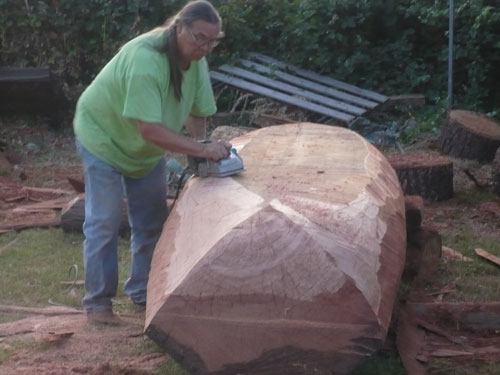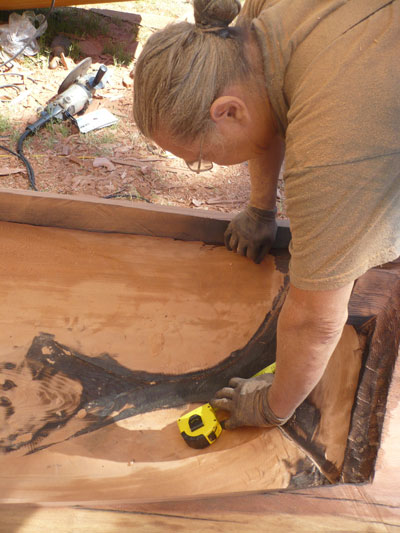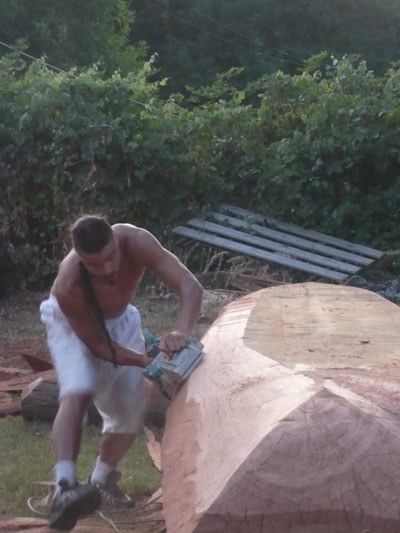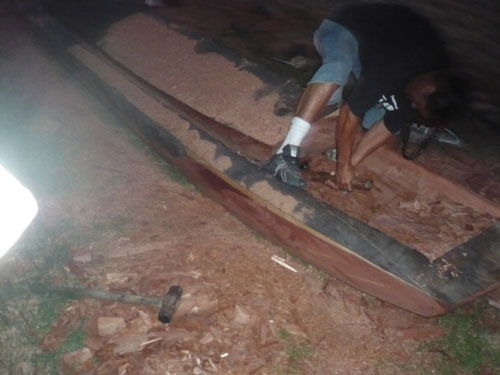George Blake (right) with his son Sagep Jake Blake (left), who was one of his apprentices in 2014. Photo: Russell Rodriguez.
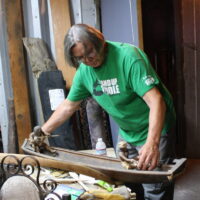
George Blake
Hoopa and Yurok Traditional Arts
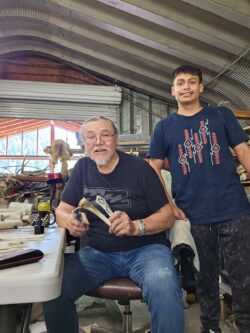
Redwood canoes were once the main mode of transportation between the peoples of the Hoopa, Yurok, and Karuk tribes of Northern California. They are a vital element of these tribes’ Boat Dance and White Deerskin Dance ceremonies that are still held to this day. Currently, there are only approximately four men in existence who maintain the knowledge and ability to construct a redwood dugout canoe. This art form is in grave danger of being lost, which would be detrimental to the cultural health of the native people of Northern California.
George Blake (Hoopa, Yurok) began carving redwood dugout canoes as a child over sixty years ago. He began carving canoe miniatures under the guidance of master Haynes Moore. After Haynes’ passing, George worked with master Dewey George, who helped him build a canoe that is still utilized in ceremonies today. He also learned to make sinew-backed bows from Homer Cooper, one of the last bow makers. In 1991, George was named an NEA National Heritage Fellow.
Apprenticeship Program
2023
As a artist in ACTA’s Apprenticeship Program in 2023, George will instruct his grandson, Takatamah Yeship Montgomery (Hoopa, Yurok), in crafting sinew-backed bows and in carving elk horn antlers in the Hoopa Tradition.
2014
In 2014, George worked with his son, Sagep Jacob Blake, and his nephew, Caw-Tep Wolf Lee Sylvia. George trained his apprentices in the knowledge and skills necessary to carve a redwood dugout canoe; the apprenticeship’s ultimate goal was to complete a twelve-foot canoe.

